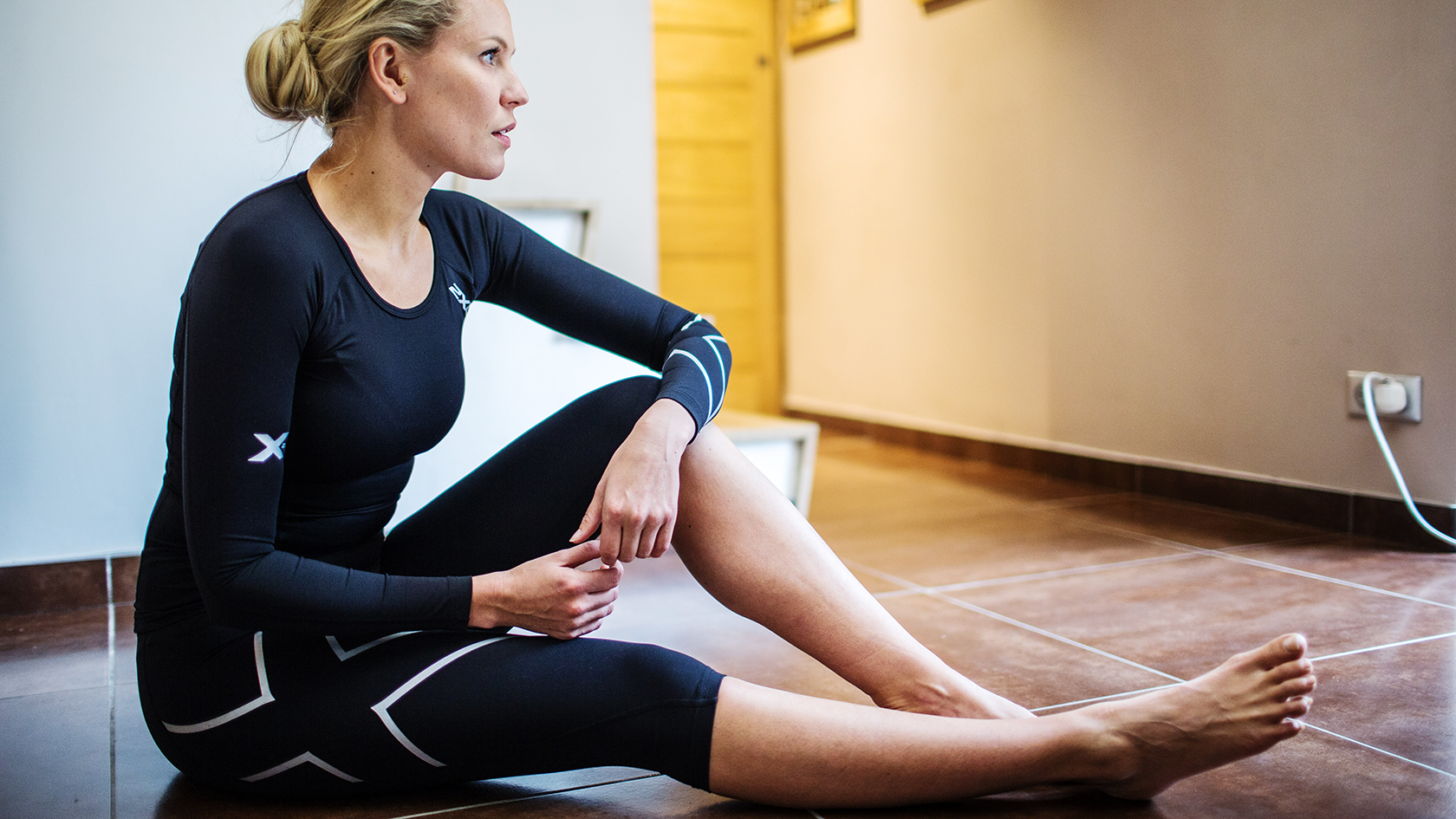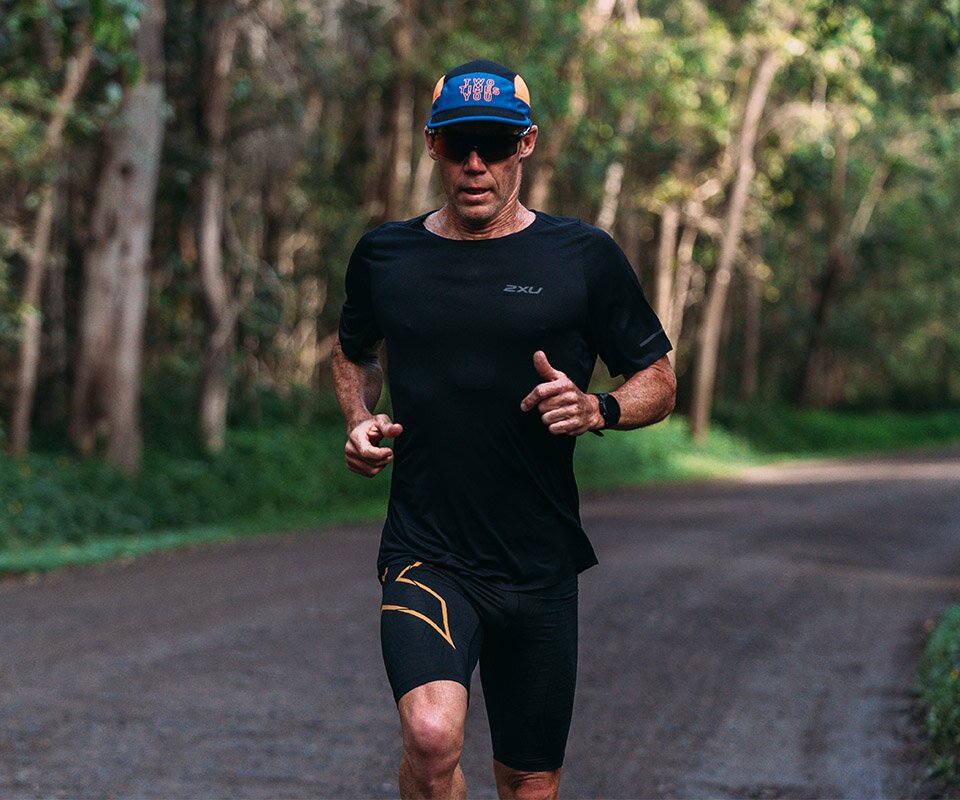How to Use Compression to be a Better Runner
Running is more than just putting one foot in front of the other—it's about optimizing every aspect of your performance, recovery, and comfort. One of the most effective yet often misunderstood tools in a runner’s arsenal is compression gear. But what is it? And does it really work?
What Is Compression Gear?
Compression gear refers to specially designed clothing that applies gentle, graduated pressure to specific areas of the body, most commonly the legs. This includes socks, sleeves, tights, and shorts made from elastic materials that hug your muscles closely.
The pressure is usually highest at the extremities (like the ankle) and gradually decreases as it moves up the limb, helping to promote blood flow back to the heart. This design is what makes compression gear different from regular athletic wear.
How Does Compression Running Gear Work?
Research performed by 2XU on the effect of compression wear "clearly suggests that endurance performance is optimised by the wearing of compressive garments.” So, how does compression actually work?
Modern compression clothing uses 'Graduated Compression' constructed from specially designed seams and panels to increase circulation in your limbs. This means that it puts the most pressure on your outermost parts, such as your ankles, and gradually reduces this pressure as it moves up towards your body.
This technology delivers a controlled amount of pressure to improve the rate of oxygenated blood going to your muscles and deoxygenated blood going back to the heart and reduce lactic acid build-up. CEP found that their products improved the flow of oxygenated blood by up to 40%.
While the study on 2XU showed that “compression garments not only have the potential to optimise performance… they also have a central role to play in the recovery process.” This is because compression gear wraps around and supports key muscles, reducing movement and vibration and therefore minimising soft tissue damage.
Not only does this help you recover faster, but runners “demonstrated that they used less energy when running at a sub-maximal speed (and were) more economical and efficient” concluding that the added stability and control help you run further, for longer, and with less effort.
What's Lactic Acid?
When you exercise, your body needs energy and needs to break down molecules to get it. Lactic acid is one of the molecules released. Small amounts of lactic acid are a good temporary energy source, and can reduce fatigue during a run.
However, lactic acid only helps for a short period of time. An increase in the acidity of the cells can cause a burning sensation in your muscles, slowing their ability to keep going. This usually takes 30-60 minutes to clear after working out.
Compression reduces lactic acid production meaning your muscles will be able to go for longer with less damage (and less pain). This means they’ll return to normal quicker, reducing your chance of delayed onset muscles soreness or DOMS.
What Should Compression Feel Like?
When buying compression clothing, you’ll notice that your recommended size will not determined by your regular measurements but by BMI, using your height and weight to ensure it fits correctly.
Compression clothing will be a much tighter fit than regular running tights but should not be painful or restrictive to your movement. It must fit your body properly; if it's too tight, it could prevent circulation.
Your clothing won’t need to be broken in and will return its tight, supportive stretch for around 40-60 washes, or the same distance as your running shoes.
Most importantly, remember your compression clothing should be comfortable and a piece that works for one runner may not work for another, so you may have to try different ones to find your perfect fit.
The Benefits of Wearing Compression
Increased recovery speed
- One of the biggest benefits of wearing compression gear during your run is the speed at which you can recover afterwards.
- The pain you feel in the hours and days after a run can be due to microtrauma in your muscles and connective tissue, causing inflammation. Increased blood circulation can reduce muscle swelling, helping them to repair quickly.
- By reducing the vibration of your muscles from impact, your legs are less likely to feel fatigued, keeping you fresh for longer while reducing soft tissue damage and speeding up your recovery.
Improved circulation
- Improving circulation delivers more oxygen to your active muscles, meaning you can work harder for longer.
Less Cramp
- With improved circulation, your body can flush out lactic acid and metabolic waste, giving you more power and reducing your risk of cramps.
Reduced risk of injury
- Compression gear places controlled pressure over key areas, reducing strain, boosting blood flow, and minimising your risk of injury.
Temperature control
- The technical fabrics that makeup compression clothing are moisture-wicking and breathable, keeping you dry, comfortable, and cool.
- The influence of SKINS A400 lower body compression garments on running and neuromuscular performance
- Effect of 2XU-compression wear on endurance performance and functional energy metabolism
| Type | Best For | Key Benefits |
|---|---|---|
| Compression Socks | Calves, lower legs | Improved circulation, reduced soreness, injury prevention |
| Calf Sleeves | Calves (not for recovery) | Muscle support during activity, not recommended for post-run recovery |
| Compression Tights | Full legs, quads, glutes, knees | Full-leg support, reduced muscle vibration, warmth |
| Compression Shorts | Quads, hamstrings, glutes | Aerodynamic fit, muscle support, reduced impact |
Compression socks for running are designed to support your calves and ankles during both training and recovery. Women's compression socks and men's compression socks are available in various sizes and styles to suit different needs. Many runners choose compression socks for hilly running, long-distance events, or recovery after hard sessions.
Compression Tights, Shorts, and Calf Sleeves: Which Is Best?
When choosing between compression tights, compression shorts, or calf sleeves, consider your running goals. Compression tights and compression shorts offer support for the entire lower body, while calf sleeves and calf wraps focus on the calves. Women's compression shorts and men's compression shorts are popular for their aerodynamic fit and muscle support.
FAQs
Runners wear compression socks and gear to:
- Support their calves and legs during long runs
- Aid in post-run recovery
- Prevent injuries and reduce swelling
- Enhance performance on hilly or challenging routes
Research suggests compression socks can help you run longer and at higher speeds, especially at your anaerobic threshold, by improving circulation and oxygen delivery.
Compression socks are generally safe to wear all day, but calf sleeves should only be worn during activity, not during long periods of inactivity.
The gear should feel snug but not painful, with no bunching or cutting off circulation. You should be able to move freely and slide a hand beneath the fabric.
No! Runners of all abilities can benefit from compression gear, whether you’re training for a 5K or a marathon.
Compression can help support the muscles around your shins and reduce vibration, which may help with shin splint discomfort, but it’s not a cure-all.
Compression socks provide calf support, help reduce muscle fatigue, and can improve recovery by promoting better blood flow. The benefits of compression socks for running include decreased swelling, reduced risk of injury, and improved muscle efficiency during both training and races.
Related Articles










